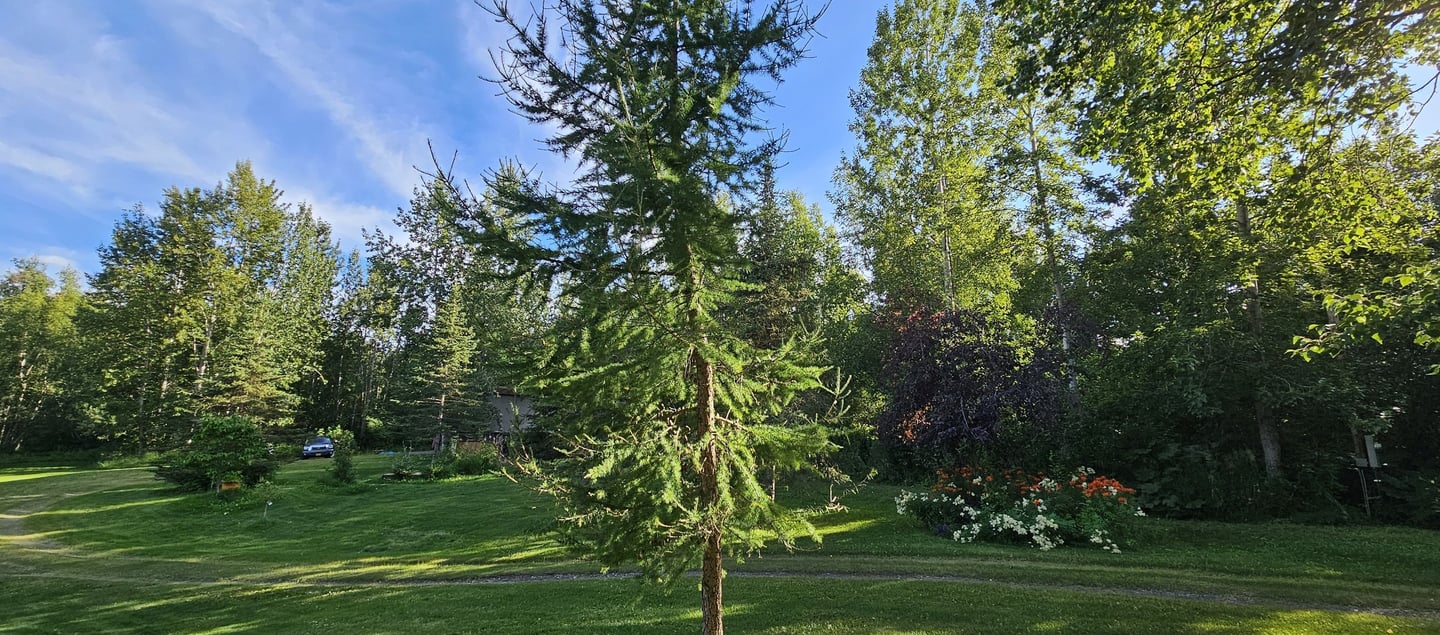Siberian Larch
The Siberian Larch (Larix sibirica) is a hardy deciduous conifer native to northern Russia and Siberia, renowned for its adaptability to harsh climates. Growing up to 100 feet tall, it features soft, bright green needles that turn golden in autumn before shedding. Its strong, reddish-brown bark and small cones make it a striking addition to landscapes, thriving in cold, wet soils with remarkable resilience.



Your Larch
Coming soon...
Care For Me
Step 1: Select an Appropriate Site
- Choose a location with well-drained, moist soil (sandy or loamy) and full sun to partial shade.
- Ensure space for growth (up to 60-80 feet tall, 20-30 feet wide).
- Avoid waterlogged or overly dry sites.
Step 2: Prepare for Planting
- Dig a hole twice as wide and as deep as the root ball.
Step 3: Plant the Seedling
- Place the seedling in the hole, keeping the root collar level with the soil surface.
- Backfill with native soil, gently firming to eliminate air pockets.
- Water deeply to settle the soil.
Step 4: Moose Protection
- Install a protective barrier:
- Use a 5-6 foot tall metal or heavy-duty plastic mesh cage, secured with stakes.
- Alternatively, wrap the trunk with burlap or plastic spiral guards to deter browsing.
- Inspect and adjust guards regularly as the tree grows.
Step 5: Watering and Mulching
- Water weekly during the first growing season (about 1 inch per week), especially in dry spells.
- Apply 2-3 inches of organic mulch (e.g., bark or wood chips) around the base, keeping it 2 inches from the trunk to avoid rot.
Step 6: Ongoing Care
- Fertilization: Skip fertilizer in the first year. In year two, apply a balanced slow-release fertilizer (e.g., 10-10-10) in spring if growth seems slow.
- Pruning: Prune dead or damaged branches in late winter or early spring. Minimal pruning is typically needed.
- Pest/Disease Monitoring: Watch for larch sawfly or needle blight. Contact the Alaska Division of Forestry if issues appear.
Step 7: Winter Protection
- Wrap young trees with burlap in harsh Alaskan winters to protect against windburn and heavy snow.
- Maintain mulch layer to insulate roots during freezing temperatures.
Tips:
- Siberian larch is very cold-hardy (USDA Zones 2-6), ideal for Alaska’s climate.
- Check moose protection frequently, especially in fall when moose activity increases.
- For local guidance, consult the Alaska Division of Forestry or cooperative extension services.
Just for Fun
Fun Facts About Siberian Larch (Larix sibirica)
1. Deciduous Conifer: Unlike most conifers, Siberian larch sheds its soft, needle-like leaves annually, turning a stunning golden-yellow in fall before dropping, making it a unique "deciduous conifer."
2. Cold-Climate Champion: Siberian larch is one of the hardiest trees, thriving in Alaska’s frigid winters (down to USDA Zone 1), withstanding temperatures as low as -70°F in its native Siberian range.
3. Ancient Survivor: Some Siberian larches in Russia are over 900 years old, with their dense, rot-resistant wood earning them the nickname “ironwood” for enduring harsh conditions.
4. Wildlife Haven: Its seeds and foliage provide food for birds like finches and small mammals, while its dense stands offer shelter for wildlife in Alaska’s boreal forests.
5. Eco-Friendly Firewood: The wood burns hot and clean, making it a favorite for firewood in cold regions, and its durability is prized for construction, furniture, and even telegraph poles.
6. Carbon Sink Superstar: Siberian larch forests are excellent at sequestering carbon, playing a key role in mitigating climate change, especially in northern ecosystems like Alaska’s.